We slipped in early to
Momofuko with pal Ms Q in our whirlwind tour of NYC landmark eating. So no queue. We quickly decided what to eat and informed our extremely surly dragon lady waitress of our preferences
To start, hamachi with beet and apple, then some of the famous steamed buns, two pork, and one shitake for me which engendered funny looks from Hock and Ms Q. One bowl of the supposedly famous ramen and the skate to finish. A few "artisinal" beers which Hock chose.
Sashimi with beet and apple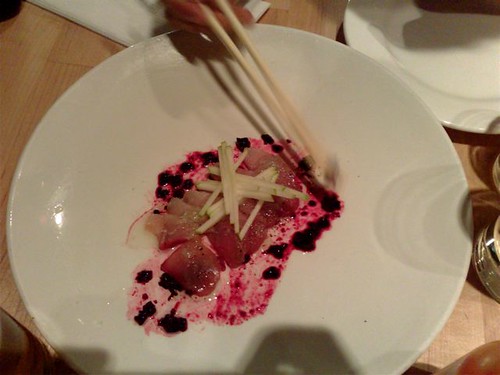
This dish arrived as a painfully small portion of sashimi of a generally low grade. Words cannot fully describe the disappointment I felt over this fish. It could have, should have been lush thick pieces, with tart crisp apple playing off against a sweet beet flavour. Instead I felt like I was being fed left overs from a diners' meal at David Chang's more upscale
Ko. Left over sashimi at a $16 US price point or there abouts.
Pork Buns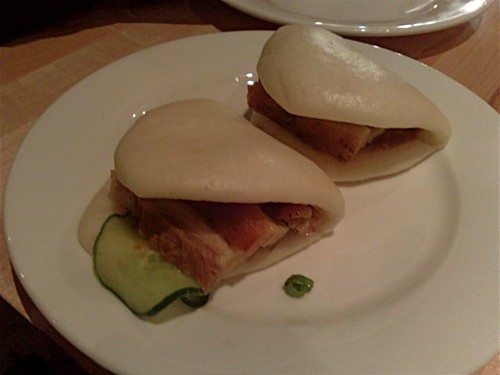 Shitake Buns
Shitake Buns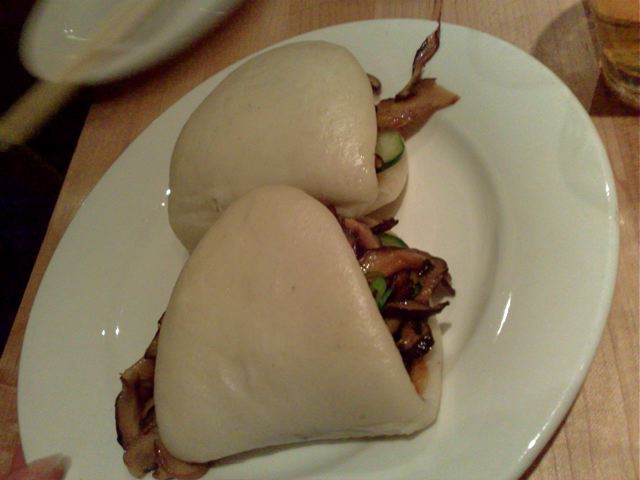
The buns arrived and offered a brief moment of reprieve. They were pretty good, but considering the price, (if memory serves they were around $9 for two) and the hyperbole, you'd hope for something decent. Especially given that it is still just a steamed bun - street food in most places in East Asia that can be had for a mere dollar or two - with much more succulent pork, speedier, sweeter service and less fuss. Such as this one, had in Japan for a quick bite (and created by someone who appears to be the Japanese "elvis" of pork buns)
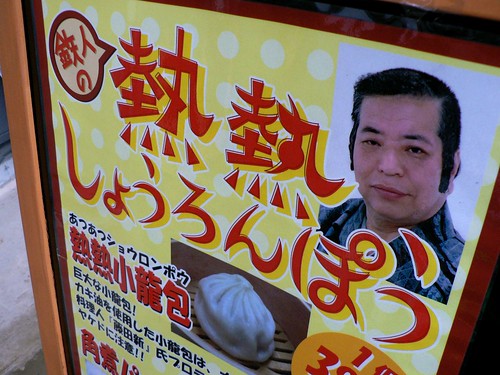
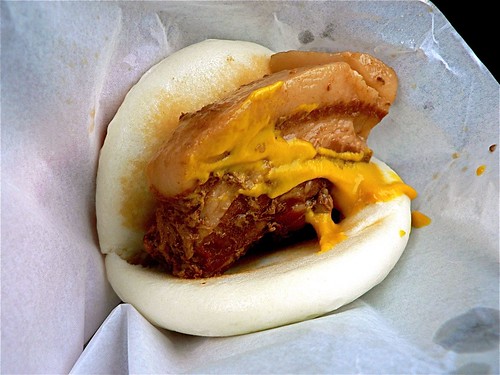
But I digress....next arrived the ramen
Ramen
This was a major disappointment. With all the fuss that surrounds momofuku I half expected it to be the best bowl of ramen I have ever eaten. Alas it was at this point that Hock and I turned to each other in agreement and said "the emperor has no clothes". The broth lacked depth of flavour, the pork was like a dry Chinese char sui rather than a succulent fatty ramen pork. The noodles were definitely edible, but again at 16 USD for a bowl I felt as though David Chang had personally sucker punched me in the wallet.
With a single bite into the dry unmalleable pork, both Hock and I began to pine for "our" ramen guy on Thonglor, Bangkok. A simple ramen shop that serves the most unbelievably tender and delicious pork, with a dollop of homemade miso chili paste for the modest price of 80 baht. Or 2.50 USD. Now I know that labour costs and rents are higher in New York than Thailand, but you'd expect that labour perhaps to be more skilled or at least capable of preparing ramen of equal if not superior quality......but no the "labour" in question, standing behind the "noodle bar" seemed more concerned with the placement of his hispter head band and iphone communications than the succulence of our porky noodles. And certainly there was no appreciative yelling of "thank you very much for your custom" that cheers me to no end after eating at family style ramen joints.
Skate with brussel sprouts and kochujiang style sauce
The skate was fresh. And that about sums up all I have to say about this dish.
The beer was good, if not again a little over priced....aahh what a funky label and the words artisinal will do for prices these days

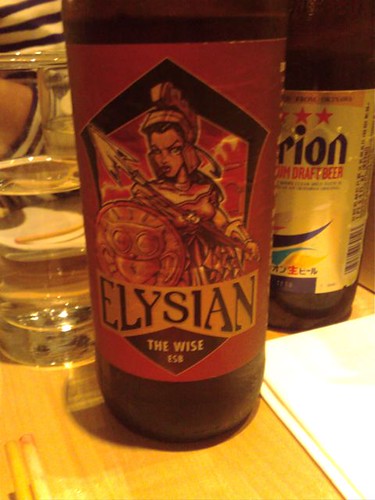
The total price of the meal USD$150 plus tips.....my Chinese grandmother would turn in her grave if she knew what we paid for a bowl of noodles and some pork buns.
Afterwards we headed to
Chickalicious for a quick and reasonably price dessert
thumbs up...
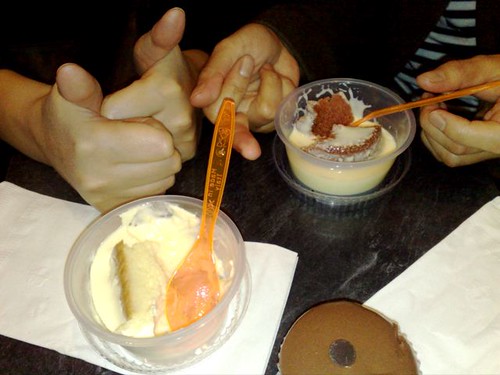
it was good to see the original chef still working at her kitchen
Afterwards we landed at a bar in the lower east side that is reached by walking through a Japanese noodle bar. I walked in and half heartedly wished we had eaten here. We had a few whiskys chatted and Hock talked to the Japanese barmen. He told them we had just eaten at momofuko and how bad it was. They nodded in agreement and proclaimed it odd that "white people just love it there"
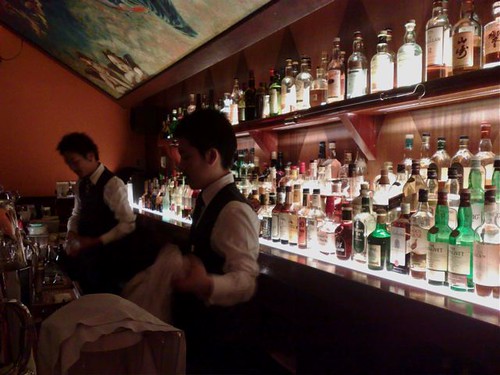
Which is exactly what momofuko is, it is gentrified "Asian" food cleaned up for a primarily white clientele who will unwittingly pay three times the price for an average bowl of noodles for the privilege and convenience of not having to navigate unfathomable menus and dirty toilets. "Eating the other, without meeting the other" is a term I recall being used once, which is odd, as I thought Japanese street foods like ramen and steamed buns had already been demystified to the general populous, and certainly a Japanese toilet is often far preferable to a western one...and here I was thinking that "Asian" is the new "White"....and that the time for repackaging a steamed bun and selling it for three times the price to scared white folks were over...how wrong I was.....David Chang may not be the greatest chef in the world but he certainly isn't the stupidest either.
So in the end we too had to come to the same general conclusion as David Chang himself conceded when interviewed about being given the James Beard award - confusion and general bewilderment that such praise is utterly undeserved.















